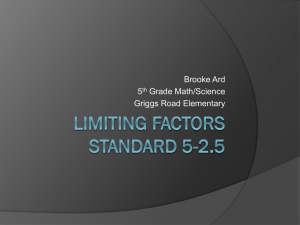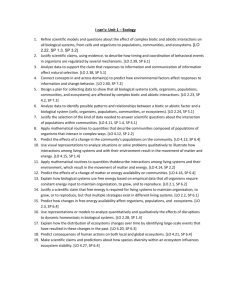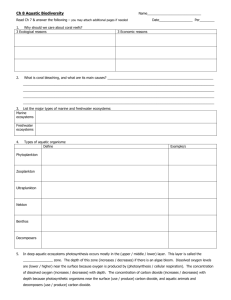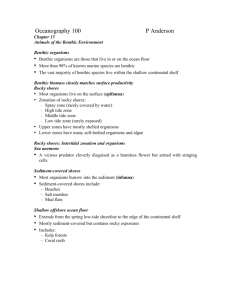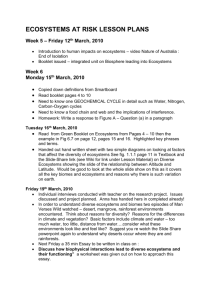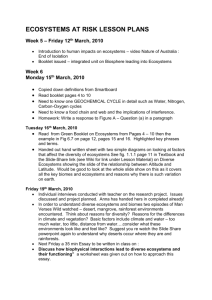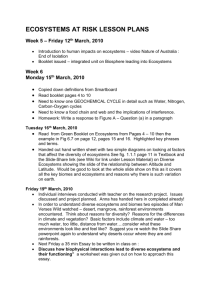Populations and Biomes - Kenton County Schools
advertisement
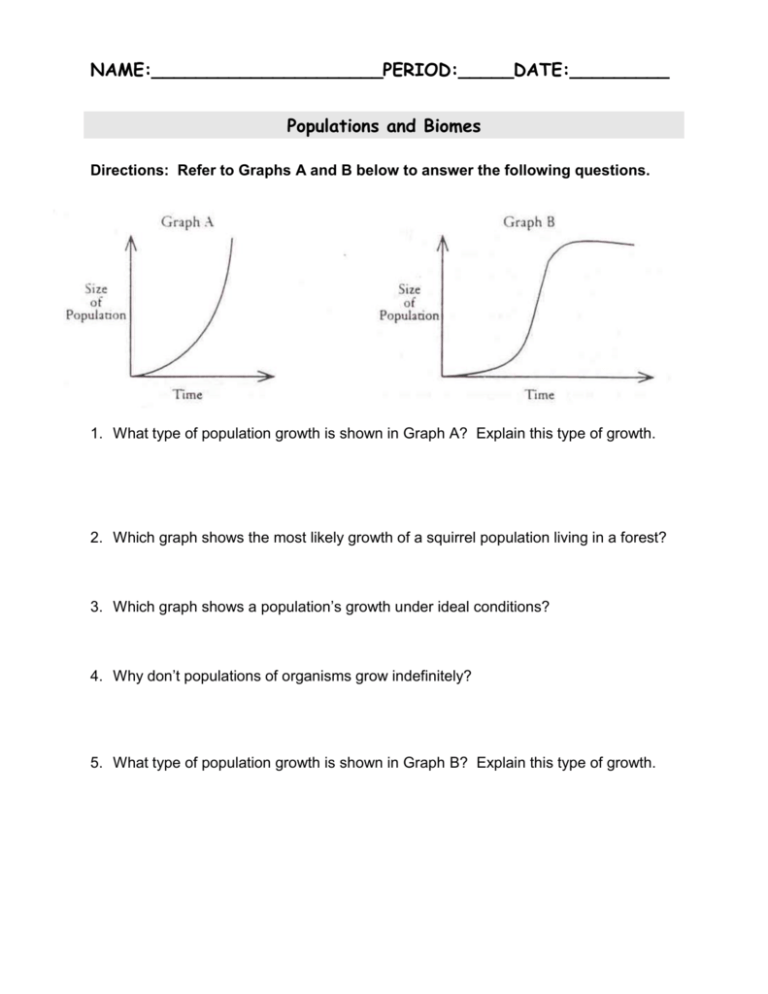
NAME:_____________________PERIOD:_____DATE:_________ Populations and Biomes Directions: Refer to Graphs A and B below to answer the following questions. 1. What type of population growth is shown in Graph A? Explain this type of growth. 2. Which graph shows the most likely growth of a squirrel population living in a forest? 3. Which graph shows a population’s growth under ideal conditions? 4. Why don’t populations of organisms grow indefinitely? 5. What type of population growth is shown in Graph B? Explain this type of growth. Directions: Answer the following questions about populations. 6. What are the three general characteristics of a population? 7. What two factors cause a population to grow? ______8. Limiting factors whose effects increase as the size of the population increases are A. abiotic factors B. density-dependent factors C. exponential in nature D. density-independent factors ______9. The movement of individuals from a population is A. immigration B. a reproductive pattern C. a life-history pattern D. emigration ______10. The proportions of a population that are at different age levels make up the population’s A. fertility rate B. growth rate C. age structure D. carrying capacity ______11. Unrestricted populations of organisms experience A. exponential growth B. linear growth C. infertility D. biotic growth ______12. For a particular species, the carrying capacity is the maximum number of individual organisms that A. the species could reach in a given time period if all the offspring survive and reproduce B. can be supported by a given environment C. are in their post-reproductive years D. can be supported if there are no limiting factors ______13. Density-independent factors are limiting factors whose effects are A. confined to the habitat of a population B. determined by the degree of competition for resources C. not influenced by population densities D. determined by the difference between birthrate and death rate. ______14. A limiting factor that has an increasing effect as population size increases is A. temperature B. drought C. competition D. habitat disruption Directions: Determine if the statement is true. If it is not, rewrite the underlined part to make it true. _______________15. Looking at past population trends is a good way to predict the future of human populations. _______________16. Demography is the study of health population characteristics. _______________17 Worldwide human populations have decreased exponentially over the past few centuries. _______________18. To tell whether a population is growing, you must know the difference between the birth rate and the death rate. _______________19. If a country has a low death rate and a high birth rate, it will grow slowly, if at all. Directions: Use the following excerpts from students’ letters to determine in which biome each student is living. Write the name of the biome in the space provided. 1. “Much of the northern part of the northern hemisphere is like it is here – treeless. Soon, the short growing season will be over. I tried to dig in the frozen ground a few days ago, but I could only dig a few centimeters down. While I was digging, I saw an arctic fox.” 2. “I live near the equator. We get a lot of rain here – last year we had about 450cm of rain. There are many kinds of plants here. We have many trees that are about 45m tall. We have ferns and climbing plants. There are also many animals. Everyday I see many kinds of birds, reptiles, and insects.” 3. “All I can see for miles and miles is grass. There are only a few small trees and some shrubs to break the monotony. There really aren’t too many different kinds of plants. But we have some interesting animals that live here, for example, zebras and elephants. Last year during the dry season, we had several small fires.” 4. “It rained yesterday. We get more rain during some times of the year than others. Last night I heard a coyote howl. This morning I heard a roar that sounded like a train. I looked outside and off in the distance I could see a cloud of dust behind a herd of animals that looked like bison. 5. “We live between the tropic of Cancer and the equator. There is usually a wide range of temperature between day and night. The soil is very sandy and there are few plants. It’s hard to grow many plants here, since we get very little rain. I see many reptiles, though. Most of them are nocturnal.” 6. “We have four seasons. It is warm during the summer and cold during the winter. Most of the trees lose their leaves in the fall. Many birds migrate to a warmer climate just before winter comes. I like to be outside, though, and watch the animals. I like watching squirrels, raccoons, and deer the best.” 7. “Our house is between 50N and 60N latitude. The winters are very cold. Sometimes it is as cold as -50C! For this reason, most of the precipitation that we get is snow. The trees are shaped like cones, so the snow falls off them and does not damage them. I like the summer. Too bad it’s so short.” 8. “The plants here are quite different from those I am familiar with. Leaf surfaces are small; some are only spines. The stems and branches are thick in order to store water. Sometimes it gets so dry huge fires start. But after a rainfall, areas that were barren suddenly are covered with flowering plants. Directions: Answer the following questions about aquatic ecosystems. 1. How much of the Earth’s surface is covered with water? __________ 2. Most freshwater ecosystems belong in one of two following categories ____________________ ecosystems and ____________________ ecosystems. 3. What does the depth of the water determine? 4. Where do flowing-water ecosystems originate? 5. What is a wetland? 6. What are three main types of freshwater wetlands? How can you tell which one is which? 7. What are estuaries? 8. Circle the letter of each sentence that is true about coral reefs. a. The coasts of Florida and Hawaii have coral reefs. b. The primary structure of coral reefs is made of the skeletons of coral animals. c. Almost all growth in a coral reef occurs within 40 meters of the surface. d. Only a few organisms are able to live near coral reefs. 9. The benthic zone covers the ocean_________________________. 10. Label the zones of the lake below. Tell how you know which zone is which. A. – B. – C. – 11. Label the zones of the ocean below. Tell how you know which zone is which. A. – B. – C. –



